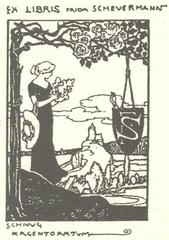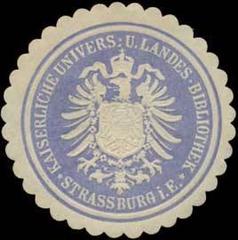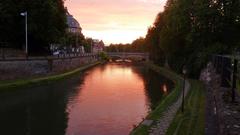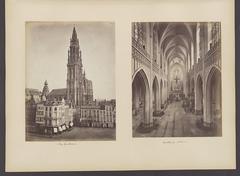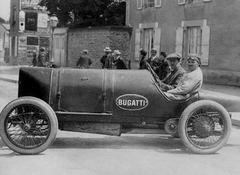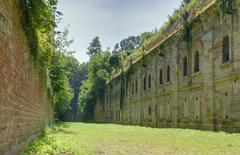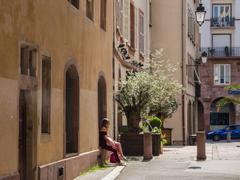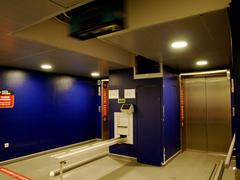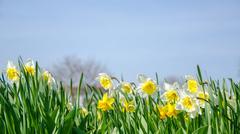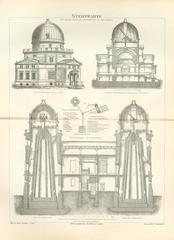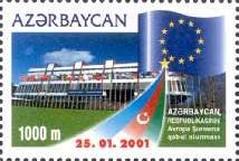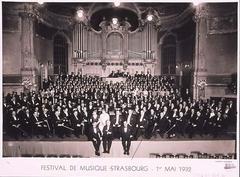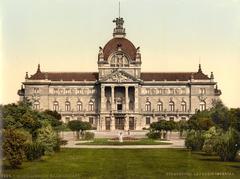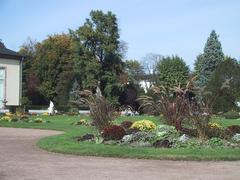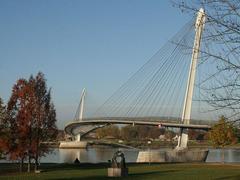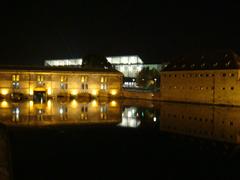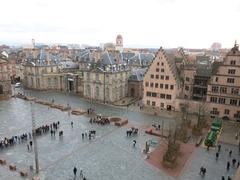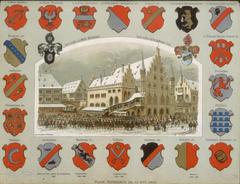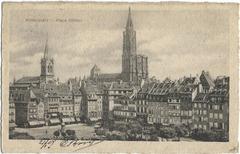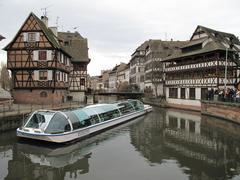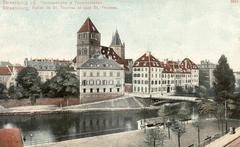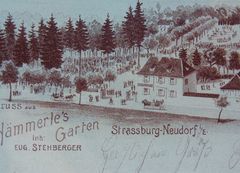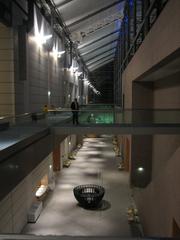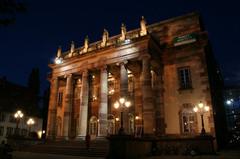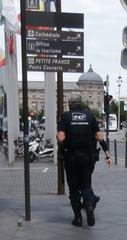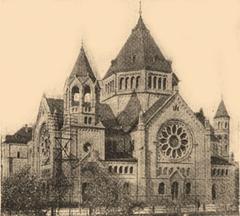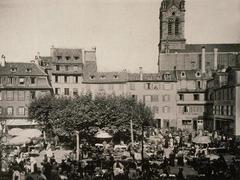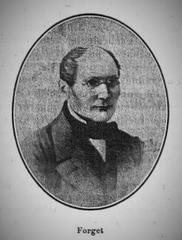Französische Turm Strasbourg: Visiting Hours, Tickets, and Complete Travel Guide
Date: 03/07/2025
Introduction: History and Cultural Significance
The Französische Turm (French Tower) is a striking medieval monument that anchors Strasbourg’s historic fortifications and stands as a symbol of the city’s layered Franco-German heritage. Erected in the 13th century as part of an extensive defensive network, this tower has witnessed centuries of military, political, and cultural change. Today, it is nestled within the UNESCO-listed Grande Île, offering visitors a tangible connection to Strasbourg’s storied past and panoramic views of the Petite France district and the River Ill. Whether you are fascinated by military architecture, urban history, or simply wish to discover one of Strasbourg’s most photogenic sites, the Französische Turm is a must-visit landmark (World City History; Strasbourg Tourism; Postcards and Places).
Table of Contents
- Historical Background
- Architectural Highlights
- Visiting Information
- Nearby Attractions
- Practical Tips for Visitors
- Frequently Asked Questions (FAQ)
- Conclusion and Resources
Historical Background
Origins and Strategic Role
Constructed in the 13th century, the Französische Turm formed part of Strasbourg’s formidable medieval fortifications. As a Free Imperial City within the Holy Roman Empire, Strasbourg was a strategic target, necessitating robust defenses. The tower’s placement at the western edge of the Grande Île—guarding access via the Ponts Couverts—was vital for monitoring and repelling invaders (World City History; Strasbourg Tourism).
The name “Französische Turm” emerged during periods of French rule, particularly after the city’s annexation by Louis XIV in 1681. Strasbourg’s history of alternating French and German sovereignty is etched into the tower’s very stones, with each era leaving its mark on the cityscape (Wikipedia: History of Strasbourg).
Evolution Through Conflict
The tower and its companion structures played crucial roles during numerous conflicts, from medieval sieges to the Franco-Prussian War. While many fortifications were dismantled in the 19th century to allow urban expansion, the Französische Turm was preserved as a testament to Strasbourg’s resilience (Wikipedia: History of Strasbourg). Restoration efforts in the 20th century, including the addition of a viewing terrace, have ensured its continued prominence as both monument and vantage point.
Architectural Highlights
Medieval Defensive Design
The Französische Turm embodies the robust, functional design of Upper Rhine military architecture. Built from local pink sandstone, its cylindrical structure, crenellated parapets, and narrow arrow slits were engineered for defense—providing wide firing fields and protection from projectiles (Postcards and Places). Integrated into a network of walls, moats, and bastions, the tower adapted over the centuries to evolving military technologies.
Urban Integration and Preservation
As Strasbourg’s cityscape modernized, the tower transitioned from a defensive bastion to a cherished landmark. Its juxtaposition against half-timbered houses and modern buildings highlights the city’s architectural diversity. The preservation of the Französische Turm amidst 19th- and 20th-century urban development demonstrates Strasbourg’s commitment to honoring its heritage (FranceRent: Strasbourg).
Cultural Symbolism
The tower is more than a military relic; it is a potent symbol of Strasbourg’s identity at the crossroads of Europe. Its endurance through wars, political upheavals, and urban renewal underscores the city’s dedication to cultural preservation (Facts.net: Strasbourg).
Visiting Information
Hours, Admission, and Tours
- Exterior Access: The Französische Turm is visible year-round, with access to the surrounding area freely available at all times.
- Tower Terrace: The viewing terrace is generally open during daylight hours (approx. 9:00 AM–6:00 PM), but hours may vary by season or for maintenance. Confirm the latest schedule via the Strasbourg Tourism calendar.
- Admission: Viewing the exterior and terrace is free. No tickets are required for general access.
- Guided Tours: Several walking tours include the Französische Turm and provide historical context. Tours can be booked via the Strasbourg Tourist Office and often include other nearby landmarks.
Accessibility
- Physical Access: The surrounding area is mostly flat, paved, and accessible to wheelchairs and strollers, though some historic cobblestone streets may be uneven. Interior and terrace access involves stairs and is not wheelchair accessible.
- Restrooms: Public facilities are available nearby in Petite France and Place Benjamin Zix.
- Families and Groups: The area is family-friendly, with information panels in multiple languages and support for guided group visits.
Getting There
- On Foot: A short walk from Place Kléber and Strasbourg Cathedral, following the scenic Petite France canals.
- By Tram: Nearest stop is “Langstross/Grand’Rue” (lines A and D), around 10 minutes’ walk.
- By Bicycle: Strasbourg’s bike-friendly layout makes cycling an excellent option, with rental stations and dedicated lanes (visitstrasbourg.fr).
Facilities and Photography
- Amenities: No restrooms or concessions at the tower; cafés and bakeries nearby.
- Photography: The tower and adjacent bridges are scenic highlights, especially at sunrise, sunset, or during Strasbourg’s famous Christmas season (travelita.ch).
Nearby Attractions
- Ponts Couverts: Fortified medieval bridges and companion towers adjacent to the Französische Turm, offering river views (Petit Futé).
- Barrage Vauban: 17th-century defensive dam and bridge with panoramic terrace (free; terrace closed for renovations from January 2026) (adac.de).
- Petite France District: Charming quarter with canals, half-timbered houses, and artisan shops (francetravelblog.com).
- Strasbourg Cathedral: Landmark Gothic cathedral with viewing platform and astronomical clock (thecrazytourist.com).
- Kammerzell House: Unique late-Gothic timbered house and restaurant near the cathedral.
- Museum of Modern and Contemporary Art (MAMCS): Modern collections in striking architecture across the river (travelita.ch).
- Alsatian Museum (Musée Alsacien): Folk art and culture of the Alsace region (musiciansabroad.com).
- Place Kléber: The city’s main square, especially vibrant during Christmas markets.
- Parc de l’Orangerie: Strasbourg’s oldest park, ideal for families (travelsetu.com).
Practical Tips for Visitors
- Best Times: Early morning and late afternoon for lighting and fewer crowds; Christmas Market season for festive charm.
- Shoes: Wear comfortable, sturdy footwear for cobblestones and stairs.
- Weather: The terrace is exposed; check the forecast and dress accordingly.
- Tours: Book guided tours in advance, especially during peak seasons (Mein Wochenende im Elsass).
- Dining: Enjoy local Alsatian dishes at winstubs in Petite France (musiciansabroad.com).
- Tourist Office: For maps and event info, visit Strasbourg Tourist Office.
Frequently Asked Questions (FAQ)
Q: What are the Französische Turm visiting hours?
A: The area is accessible year-round; terrace opening hours are usually 9:00 AM–6:00 PM but may vary. Check the Strasbourg Tourism calendar for updates.
Q: Do I need a ticket to visit the Französische Turm?
A: No ticket is required for exterior access or the terrace; guided tours may have fees.
Q: Is the site wheelchair accessible?
A: The area is mostly accessible, but the tower stairs are not wheelchair friendly.
Q: Can I take photos from the tower?
A: Yes; the terrace and surroundings are popular for cityscape photography.
Q: Are guided tours available in multiple languages?
A: Yes, tours are offered in French, German, and English.
Conclusion
The Französische Turm is a vital piece of Strasbourg’s historical and architectural landscape, offering visitors free access to one of the city’s most evocative medieval structures. Its location amid the canals and colorful houses of Petite France, proximity to major landmarks, and panoramic views make it a highlight for any Strasbourg itinerary. With free admission, accessible surroundings, and a wealth of nearby attractions, the tower is perfect for history enthusiasts, families, photographers, and casual explorers alike.
Essential Visitor Information:
- Address: Ponts Couverts, Quai de la Petite France, 67000 Strasbourg, France
- Admission: Free
- Opening Hours: Daylight hours; check Strasbourg Tourism for updates
- Facilities: No restrooms in the tower; available nearby
- Accessibility: Tower stairs not wheelchair accessible; surroundings mostly flat and paved
Additional Resources
- Official Strasbourg Tourism Website
- Strasbourg City Card
- Strasbourg Tourist Office
- Französische Turm Information Page
- The World Was Here First
- Petit Futé
For offline access, personalized recommendations, and interactive travel tools, download the Audiala app. Follow us on social media for the latest travel tips and updates on Strasbourg’s cultural heritage.
